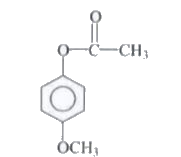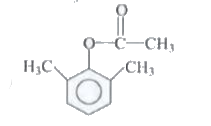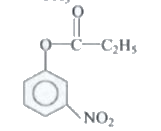Which of the following alkenes does not undergo rearrangement on heating with a strong acid?
_CHE_E06_112_Q01.png)
_CHE_E06_112_Q02.png)
_CHE_E06_112_Q03.png)
_CHE_E06_112_Q04.png)
To determine which alkene does not undergo rearrangement on heating with a strong acid, we will analyze each option based on the stability of the carbocation formed during the reaction.
1. Understanding Markovnikov's Rule: When an alkene reacts with a strong acid (like HCl or H2SO4), the proton (H+) will add to the carbon atom that has the most hydrogen atoms (the less substituted carbon), leading to the formation of a carbocation on the other carbon.
2. Analyzing the First Compound:
- Structure: (CH3)3C=CH2
- Upon protonation, the carbocation formed is a secondary carbocation.
- Secondary carbocations can rearrange to form more stable tertiary carbocations through a methyl shift.
- Conclusion: This compound undergoes rearrangement.
3. Analyzing the Second Compound:
- Structure: CH3-CH(CH3)-CH=CH2
- Upon protonation, the carbocation formed is a tertiary carbocation.
- Tertiary carbocations are stable and do not undergo rearrangement.
- Conclusion: This compound does not undergo rearrangement.
4. Analyzing the Third Compound:
- Structure: CH3-CH2-CH(CH3)-CH2
- Upon protonation, the carbocation formed is a secondary carbocation.
- This secondary carbocation can rearrange to form a more stable tertiary carbocation through a hydride shift.
- Conclusion: This compound undergoes rearrangement.
5. Analyzing the Fourth Compound:
- Structure: CH3-CH(CH3)-CH(CH2)-CH2
- Upon protonation, the carbocation formed is also a secondary carbocation.
- This secondary carbocation can rearrange to form a more stable tertiary carbocation through a hydride shift.
- Conclusion: This compound undergoes rearrangement.
Final Answer:
The alkene that does not undergo rearrangement on heating with a strong acid is the second compound.
- Structure: (CH3)3C=CH2
- Upon protonation, the carbocation formed is a secondary carbocation.
- Secondary carbocations can rearrange to form more stable tertiary carbocations through a methyl shift.
- Conclusion: This compound undergoes rearrangement.
- Structure: CH3-CH(CH3)-CH=CH2
- Upon protonation, the carbocation formed is a tertiary carbocation.
- Tertiary carbocations are stable and do not undergo rearrangement.
- Conclusion: This compound does not undergo rearrangement.
- Structure: CH3-CH2-CH(CH3)-CH2
- Upon protonation, the carbocation formed is a secondary carbocation.
- This secondary carbocation can rearrange to form a more stable tertiary carbocation through a hydride shift.
- Conclusion: This compound undergoes rearrangement.
- Structure: CH3-CH(CH3)-CH(CH2)-CH2
- Upon protonation, the carbocation formed is also a secondary carbocation.
- This secondary carbocation can rearrange to form a more stable tertiary carbocation through a hydride shift.
- Conclusion: This compound undergoes rearrangement.
The alkene that does not undergo rearrangement on heating with a strong acid is the second compound.
Topper's Solved these Questions
Similar Questions
Knowledge Check
- Question 1 - Select One
Which of the following alkyl halide undergo rearrangement in SN1 reaction ?
ACH3−CH3∣C∣CH3−C∣IH−CH3B C
C DAll of these
DAll of these - Question 2 - Select One
Which of the following does not undergo Cannizzaro reaction?
ABenzaldehydeB2 - MethylpropanalCp - MethoxybenzaldehydeD2, 2 - Dimethylpropanal - Question 3 - Select One
Which of the following compounds will not rearrange on heating with AlCl3 ?
A B
B C
C D
D
Which of the following animals does not undergo metamorphosis
View SolutionWhich of the following does not undergo diazotization reaction?
View SolutionWhich of the following does not undergo transcription of its genes?
View SolutionWhich of the following compounds cannot undergo decarboxylation on heating?
View SolutionWhich of the following alcohols undergo rearrangement during dehydration reaction ?
View Solution

